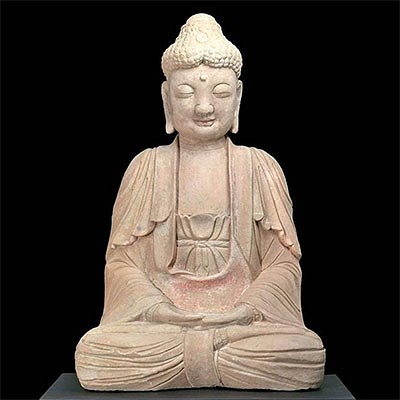Lot of 26 Korean Joseon Porcelain Figurines w/ TL Test
Lot 78c
About Seller
Artemis Fine Arts
686 S Taylor Ave, Ste 106
Louisville, CO 80027
United States
Selling antiquities, ancient and ethnographic art online since 1993, Artemis Gallery specializes in Classical Antiquities (Egyptian, Greek, Roman, Near Eastern), Asian, Pre-Columbian, African / Tribal / Oceanographic art. Our extensive inventory includes pottery, stone, metal, wood, glass and textil...Read more
Categories
Estimate:
$3,600 - $5,000
Absentee vs Live bid
Two ways to bid:
- Leave a max absentee bid and the platform will bid on your behalf up to your maximum bid during the live auction.
- Bid live during the auction and your bids will be submitted real-time to the auctioneer.
Bid Increments
| Price | Bid Increment |
|---|---|
| $0 | $25 |
| $300 | $50 |
| $1,000 | $100 |
| $2,000 | $250 |
| $5,000 | $500 |
| $10,000 | $1,000 |
| $20,000 | $2,500 |
| $50,000 | $5,000 |
| $100,000 | $10,000 |
| $200,000 | $20,000 |
About Auction
By Artemis Fine Arts
Feb 18, 2021
Set Reminder
2021-02-18 10:00:00
2021-02-18 10:00:00
America/New_York
Bidsquare
Bidsquare : Exceptional Antiquities, Asian, Ethnographic
https://www.bidsquare.com/auctions/artemis-gallery/exceptional-antiquities-asian-ethnographic-6373
Museum-worthy examples of Egyptian, Greek, Roman, Etruscan, Near Eastern, Far East / Asian, Pre-Columbian, African / Tribal, Oceanic, Native American, Spanish Colonial, Russian, Fossils, Ancient Jewelry, Fine Art, so much more! Artemis Fine Arts info@artemisfinearts.com
Museum-worthy examples of Egyptian, Greek, Roman, Etruscan, Near Eastern, Far East / Asian, Pre-Columbian, African / Tribal, Oceanic, Native American, Spanish Colonial, Russian, Fossils, Ancient Jewelry, Fine Art, so much more! Artemis Fine Arts info@artemisfinearts.com
- Lot Description
East Asia, Korea, Joseon (also Choson/Chosun) Dynasty, ca. late 16th to 17th century CE. A stunning set of twenty-six porcelain figures, twenty-five humans and one horse, all adorned in black and white or grey glaze under a lustrous burnish. Twenty-four of the human figures wear long, V-necked robes as they stand with their hands together at their waists. Though the majority of these figures are embellished with vertical lines representing the cascading folds of their clothing, four instead have robes with a lovely polka-dot design. The two largest figures, who appear to be male, wear conical hats featuring starburst motifs and capes that fall on their backs. The remaining twenty-two standing figures have lengthy hair worn in varying styles; one piles her coiffure in a pointed top bun with two strands falling to each side of her face, four wrap their locks in coils atop their heads, and the remaining let their hair fall down their backs in long pony-tails (seven with bows, three with "c" shapes, and the rest with no adornment). Size of largest: 2" W x 4.125" H (5.1 cm x 10.5 cm)
Enveloped in snowy white glaze, the anthropomorphic figure who is not standing is shown sitting with both legs bent at his knees as he holds a sack to his chest. Unlike the others, he wears pants and has hair fixed in a pair of top buns. All of the human figures boast minimalistic visages, exhibiting black-painted circular eyes under dashed brows and petite noses and mouths. Five figures display open mouths, four of which are held in a small smile, while another four have slightly raised noses. Alternatively, the horse wears a spotted saddle with a harness that wraps around his front and back. A circular adornment is featured below his long snout which presents a large black nose, narrowed eyes, and pointed black ears.
Known as baekja in Korean, white porcelain became the favored color of pottery under the Joseon (1392 to 1910), serving as the imperial ware by the fifteenth century. According to the Metropolitan Museum of Art, "In the 1460s, the royal court helped initiate and manage a group of kilns called bunwon (in today’s Gwangju, just outside of present-day Seoul), which would produce white ware for the court's use. The Bunwon would continue to function as the official court kilns until their privatization in the 1880s. The products made at the Bunwon kilns reveal that in fact several grades of white ware were manufactured there. Not all were intended for the court; many were probably made for different bureaus of the central government, and also for wealthy private patrons."
Two of these pieces have been tested using thermoluminescence (TL) analysis and have been found to be ancient and of the period stated. A full report will accompany purchase.
Provenance: private Los Angeles, California, USA collection, acquired 1980s to 2000s
All items legal to buy/sell under U.S. Statute covering cultural patrimony Code 2600, CHAPTER 14, and are guaranteed to be as described or your money back.
A Certificate of Authenticity will accompany all winning bids.
We ship worldwide and handle all shipping in-house for your convenience.
#162637Horse missing one leg. Restoration to nose of second tallest with hat and top of four figure's heads. Abraded areas on bottom of all. Six have tiny stable surface fissures near hands. TL hole on horse and tallest lady. Light pitting on a few, commensurate with age. Otherwise, very nice with excellent remaining pigments and beautiful iridescence on many.Condition
- Shipping Info
-
All shipping is handled in-house for your convenience. Your invoice from Artemis Gallery will include shipping calculation instructions. If in doubt, please inquire BEFORE bidding for estimated shipping costs for individual items.
-
- Buyer's Premium



 EUR
EUR CAD
CAD AUD
AUD GBP
GBP MXN
MXN HKD
HKD CNY
CNY MYR
MYR SEK
SEK SGD
SGD CHF
CHF THB
THB


















